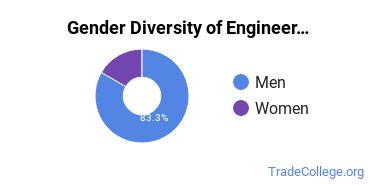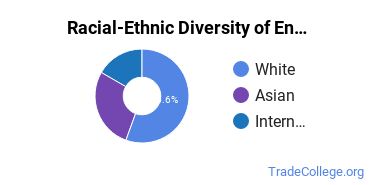Engineering Technologies at Washington University in St Louis
Every engineering technologies school has its own distinct culture and strengths. We've pulled together some statistics and other details to help you see how the engineering tech program at Washington University in St Louis stacks up to those at other schools.WUSTL is located in Saint Louis, Missouri and approximately 15,449 students attend the school each year.
Want to know more about the career opportunities in this field? Check out the Careers in Engineering Technologies section at the bottom of this page.
Featured schools near , edit
WUSTL Engineering Technologies Degrees Available
- Bachelor’s Degree in Engineering Tech
WUSTL Engineering Technologies Rankings
The following rankings from College Factual show how the engineering tech progam at WUSTL compares to programs at other colleges and universities.
Note: Rankings don't always give a complete picture of a school's strengths and weaknesses, so it's a good idea to extend your research and also look at other factors when trying to decide if the school is right for you.
Bachelor’s Degree Overall Quality & Other Notable Rankings
The engineering tech major at WUSTL is not ranked on College Factual’s Best Colleges and Universities for Engineering Technologies. This could be for a number of reasons, such as not having enough data on the major or school to make an accurate assessment of its quality.
| Ranking Type | Rank |
|---|---|
| Most Popular Engineering Technologies Bachelor’s Degree Trade Schools | 206 |
| Most Focused Engineering Technologies Bachelor’s Degree Trade Schools | 291 |
| Most Popular Engineering Technologies Trade Schools | 826 |
| Most Focused Engineering Technologies Trade Schools | 1,272 |
Engineering Tech Student Demographics at WUSTL
Take a look at the following statistics related to the make-up of the engineering tech majors at Washington University in St Louis.
WUSTL Engineering Technologies Bachelor’s Program

About 56% of those who receive a bachelor's degree in engineering tech at WUSTL are white. This is typical for this degree on the nationwide level.
The following table and chart show the race/ethnicity for students who recently graduated from Washington University in St Louis with a bachelor's in engineering tech.

| Race/Ethnicity | Number of Students |
|---|---|
| Asian | 5 |
| Black or African American | 0 |
| Hispanic or Latino | 0 |
| White | 10 |
| International Students | 3 |
| Other Races/Ethnicities | 0 |
WUSTL also has a doctoral program available in engineering tech. In 2021, 0 student graduated with a doctor's degree in this field.
Concentrations Within Engineering Technologies
Engineering Technologies majors may want to concentrate their studies in one of these areas. The table shows all degrees awarded in this field awarded for all degree levels at Washington University in St Louis. A concentration may not be available for your level.
| Concentration | Annual Degrees Awarded |
|---|---|
| Engineering-Related Fields | 18 |
Careers That Engineering Tech Grads May Go Into
A degree in engineering tech can lead to the following careers. Since job numbers and average salaries can vary by geographic location, we have only included the numbers for MO, the home state for Washington University in St Louis.
| Occupation | Jobs in MO | Average Salary in MO |
|---|---|---|
| Automotive Service Technicians and Mechanics | 16,530 | $43,080 |
| Software Applications Developers | 15,380 | $93,880 |
| Welders, Cutters, Solderers, and Brazers | 10,210 | $40,580 |
| Inspectors, Testers, Sorters, Samplers, and Weighers | 10,060 | $42,860 |
| Heating, Air Conditioning, and Refrigeration Mechanics and Installers | 6,600 | $47,710 |
References
*The racial-ethnic minorities count is calculated by taking the total number of students and subtracting white students, international students, and students whose race/ethnicity was unknown. This number is then divided by the total number of students at the school to obtain the racial-ethnic minorities percentage.
- College Factual
- National Center for Education Statistics
- O*NET Online
- Image Credit: By Bachrach44 under License
More about our data sources and methodologies.
Featured Schools
 Request Info
Request Info
|
Southern New Hampshire University You have goals. Southern New Hampshire University can help you get there. Whether you need a bachelor's degree to get into a career or want a master's degree to move up in your current career, SNHU has an online program for you. Find your degree from over 200 online programs. Learn More > |
